Since its 2014 FDA clearance, the Macy Catheter has been helping to manage the symptoms of thousands of patients. Hospices around the country have made its use a standard of practice.
Because it can help manage severe symptoms quickly with medications already available at the bedside, agencies who use the Macy Catheter can reduce costs, mitigate staffing challenges, improve patient satisfaction/quality scores, and increase referrals.
You can skip to any section of interest:
Medication administration challenges in hospice and palliative care
Effective, timely, and reliable medication administration is a frequent challenge for hospice and palliative care providers.
Hospice/palliative patients typically suffer from multiple comorbidities, producing a complex web of hurdles to medication delivery. The most common administration route, oral, often becomes compromised.
Aphagia, dysphagia, and modified mental state may affect a caregiver’s ability to deliver medications orally.
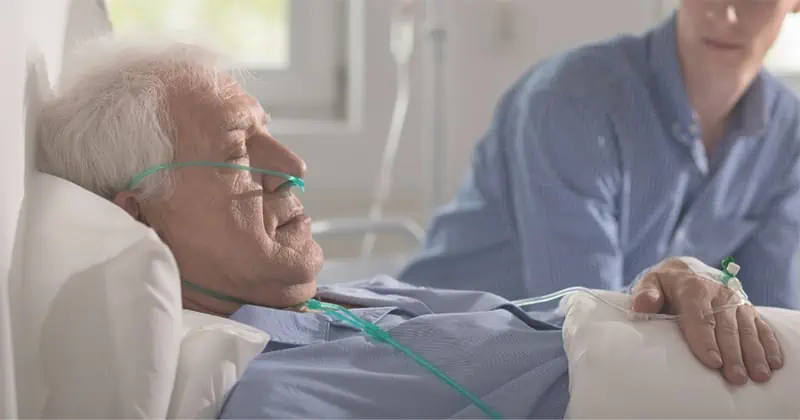
Many hospice and palliative care providers then resort to administering medications sublingually, but emerging evidence suggests this seldom works for severe symptoms and can lead to complications from aspiration.
Intravenous and subcutaneous administration requires more advanced and sterile technique, and may be delayed or not appropriate in the home setting. Furthermore, venous access is frequently challenged due to vein collapse, over-access, or other conditions. Additionally, venous access issues are often exacerbated by dehydration common in hospice patients and subcutaneous administration can be less effective when perfusion is reduced.
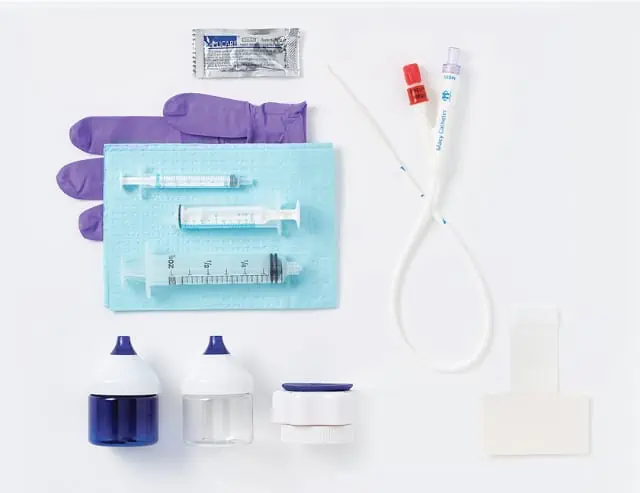
The Macy Catheter has helped thousands of hospice and palliative care patients who cannot take medications by mouth.
It is often prescribed to administer oral formulations via the rectal route. This method works as a needle-free alternative to IV and subcutaneous routes, and can mitigate shortages of injectable formulations. Clinicians have found that using the rectal route is often faster and safer than establishing IV access, and can decrease costs as well. Clinicians are also finding that it is a more effective route than sublingual, especially for patients with severe symptoms, without the risk of aspiration.
Why hospice and palliative care providers should arm themselves with an emerging rectal delivery technology

Rapid Symptom Relief
Due to the highly vascularized nature of the rectum and the opportunity to bypass the upper GI system and first-pass liver metabolism, the body is able to absorb rectally delivered medication more quickly than when delivered orally.
Alternatively, when the oral route is compromised, setting up for intravenous or subcutaneous delivery often requires hours or even days. Likewise, accessing specially compounded suppositories requires additional time and can be expensive.

Reduce Caregiver Burden, Empower Loved Ones
The Macy Catheter’s ease of use and effectiveness allows loved ones to participate in helping the patient be comfortable in relatively uncomplicated ways, bringing caregivers comfort and relief too. From caregivers whose loved ones experienced the Macy Catheter:

“Many times when our loved ones are disoriented and racked with pain, caregivers also are greatly, greatly affected, and we want to do the best, but sometimes we don’t know what is best. And so I’m very grateful that in my sister’s case, in Alice’s case, in our family’s case, the Macy Catheter was what would save her…”
-Geraldine W., Sibling

“From one idea—executed—many have found comfort. Thank you for the Macy Catheter Bedside Care Kit, because this kit allowed my husband of 61 years to spend his final days at home.”
-Barbara W., Spouse

Cost-Effective, Reliable Care.
Rectal administration is a cost-effective method of delivering medications. In a recent study, one hospice and palliative care provider reduced patient medication costs by 45% after implementing rectal catheter-based drug delivery as an alternative to IV or subcutaneous delivery. Cost reduction opportunities include decreases in medication, pump, delivery and coordination costs and decreased transport charges to and from hospital related to symptom burden.
Additionally, intravenous and subcutaneous drugs can often be subject to shortages and backorders. Many hospices suffered one or more shortages of important pharmaceuticals during the COVID pandemic and recent natural disasters. The adoption of a rectal catheter to administer medications already at the bedside may reduce the risk of a backorder impacting patient care and may, in some circumstances, allow for a diminished need to ration critical drugs.

Increased Operational Efficiency and Nurse Job Satisfaction
Utilization of the Macy Catheter can provide operational benefits as well, including:
- Decrease in length and frequency of after-hours and on-call symptom burden visits (nurse with a Macy Catheter can take care of the patient with a single, shorter visit)
- Decrease in telephone triage, MD and pharmacy calls and coordination
- Decrease in disposal of parenteral medications and associated nursing time
- Increase in nurse job satisfaction stems from alleviating patients’ suffering quickly, experiencing the gratitude of family members, and self-evidently making a difference in the lives of others

Increased Quality/Satisfaction Scores and Referrals
- The more satisified family members are with the symptom control their loved ones receive, the higher they’ll rate quality and satisfaction scores
- Very dissatisfied or extremely dissatisfied patients and loved ones disproportionately impact scores. This dissatisfaction is much more likely if symptoms spiral without prompt alleviation
- Programs with high scores and grateful families yield increased referrals

Practical Rehydration
While artificial hydration is not frequently practiced in hospice, when it is needed, whether in palliative care or hospice settings, it can make a huge difference to the patient and family. Because of the high fluid absorption capacity of the descending colon, the Macy Catheter allows for easy, safe and comfortable administration of hypotonic fluids, including tap water. A recent Hospi Corporation study among skilled nursing center patients showed that 78% of dehydrated patients thought to need hospitalization were able to stay at their facility after rectal rehydration through the Macy Catheter. Fluid administration via the Macy Catheter can also be done at home by the family.
Identifying patients for rectal administration
Just as is the case with all clinical decisions, patient selection is important when choosing rectal administration. While the prescriber is ultimately responsible to determine who is best served with the approach, the following are examples of patient situations when the Macy Catheter has often been used and that may benefit from drug delivery via the rectal route:
Patients with severe symptoms, such as:
- Severe Pain, Agitation, Nausea/Vomiting, Respiratory Distress, Seizures
Patients on multiple oral meds:
- The Macy Catheter allows for continuation of important adjuvants not absorbed sublingually or available parenterally
Patients whose symptoms would require large volumes of SL medication:
- Prevents the risk of aspiration
Patients with mild or moderate symptoms for whom titration of doses is not controlling symptoms
The Macy Catheter’s role in rectal medication delivery
The Macy Catheter has transformed the rectal route to an option that is discreet, dignified, and reliable. By facilitating a micro-enema (a small volume of fluid delivered to the distal 1/3rd of the rectum), faster and more reliable medication absorption occurs. Specifically designed by a hospice nurse frustrated by the lack of options for his patients, Brad Macy created the device based on his 20-plus years of experience in the field. As a result, providers and caregivers find the device intuitive to use.
The Macy Catheter inserts easily, seats comfortably in the rectum and requires very little instruction to use. Because it does not need a sterile technique and supplies, it can be used to treat patients in place. This includes in low acuity settings such has at home or in nursing homes, and thus can prevent hospital
transfers. It can also facilitate discharge home from acute care and inpatient facilities. Because medication and hydration can continue via the Macy Catheter, patients can receive care anywhere.
The Macy Catheter allows for the administration of different types of medications, including liquids and oral solids in a suspension. Nurses and family members find it incredibly useful to have the versatility the device provides, especially in difficult times when the patient is agitated or uncomfortable. The ease of delivery and the faster uptake of the medication leads to an improved experience for all involved.

Medication Versatility
A broad spectrum of commonly prescribed medications in hospice and palliative care are well absorbed rectally.
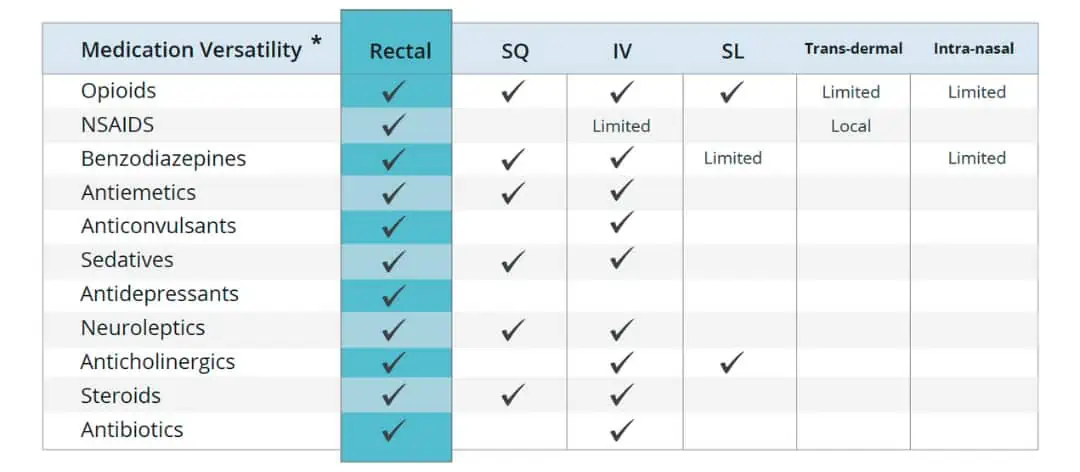
A faster, safer, and more cost effective delivery alternative.
FDA cleared to provide rectal access to administer liquids/ medications.
Facilitates quick and effective symptom management.
Proven cost savings and improved nursing efficiency. Less expensive compared to IV/ SubQ routes
Easy and safe for clinicians to use. Requires minimal training.
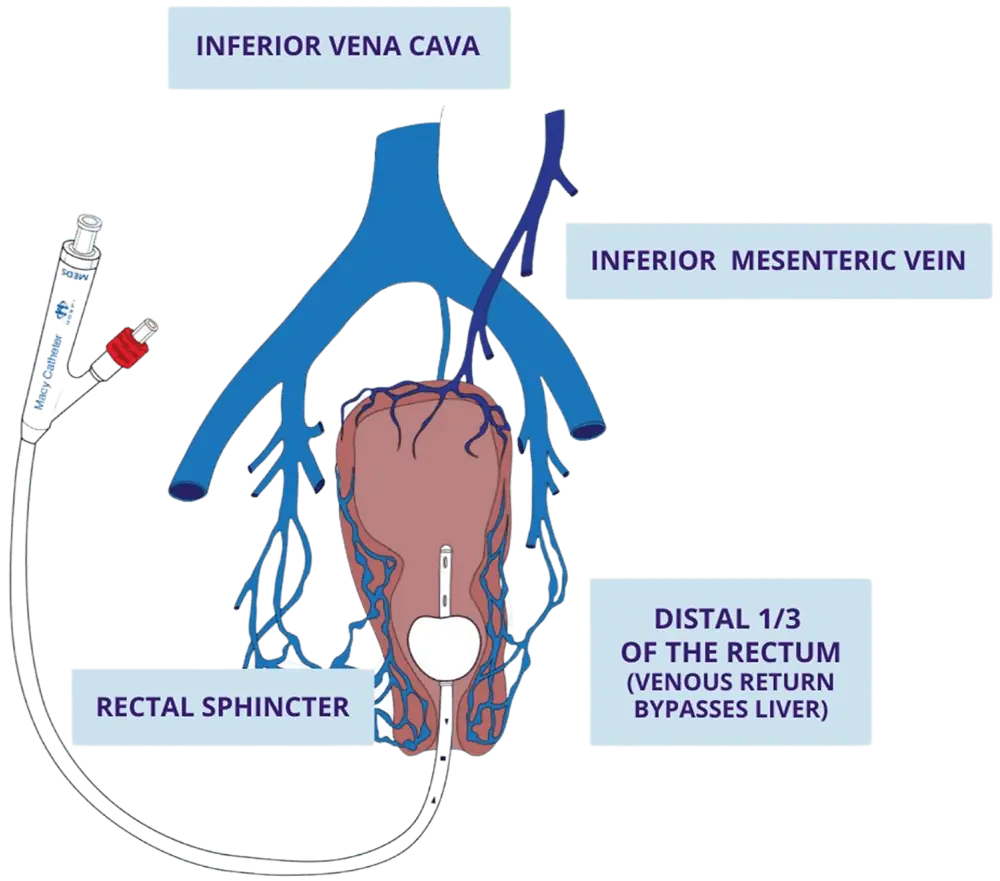
The Macy Catheter’s role in rectal medication delivery
A recent survey of hospice nurses published in the Clinical Journal of Oncology Nursing found that the Macy Catheter was more effective than sublingual administration and more comfortable than subcutaneous administration and at least as effective.
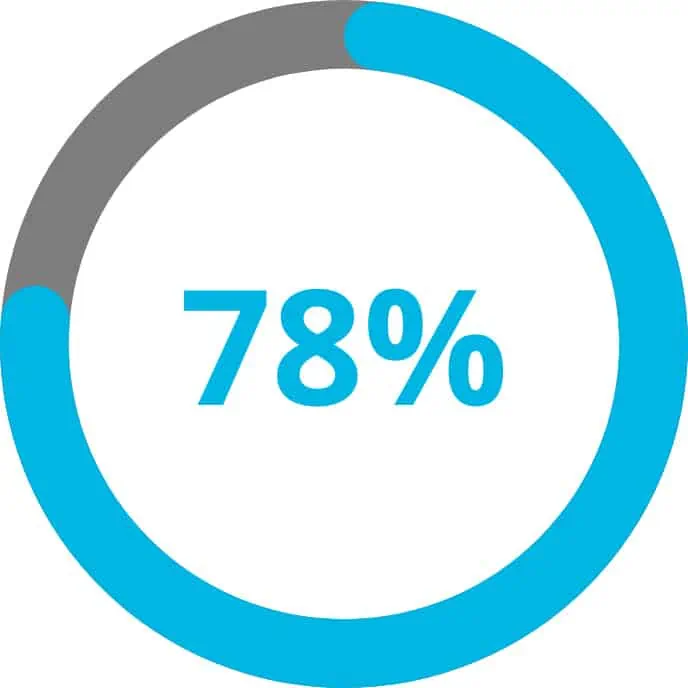
78% of those surveyed found the Macy Catheter to be more effective than sublingual medication administration.
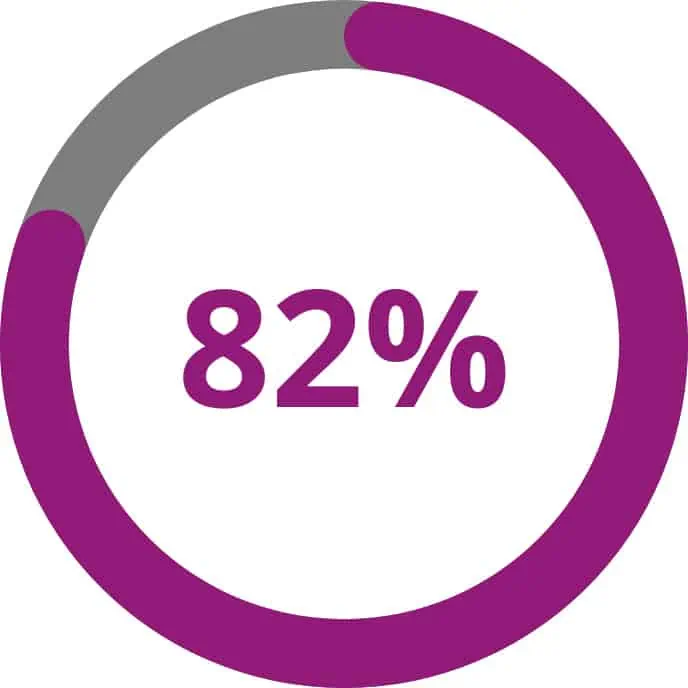
82% of nurses indicated that the Macy Catheter provided a more comfortable experience for patients compared to subcutaneous delivery
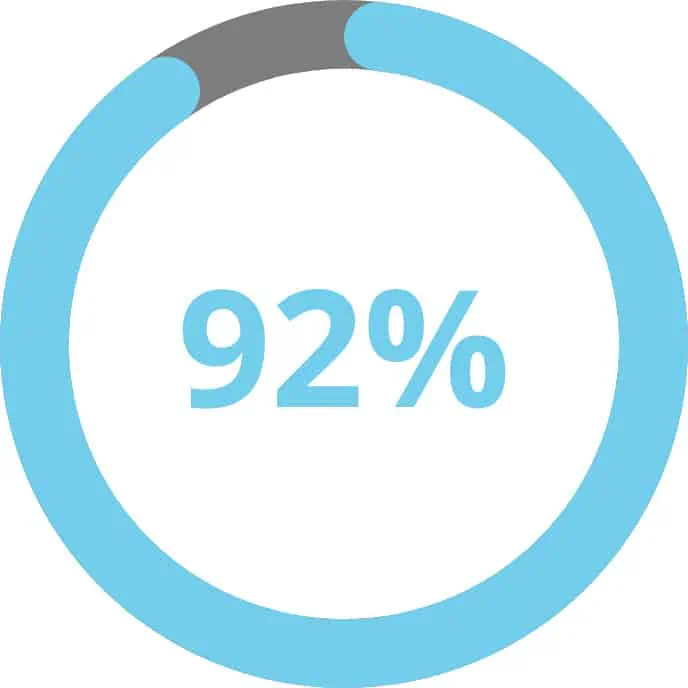
92% of nurses surveyed indicated the Macy Catheter was just as effective or more effective than subcutaneous delivery
By incorporating rectal delivery into the hospice and palliative care clinical toolkit, providers have access to a solution that better serves the patient while increasing nurse efficiency and lowering treatment cost.
“Excellent medical devices not only improve quality of life for patients, but also help caregivers and the community at large by easing the burden and cost of care.”
Bradford Macy, RN, BSN, CHPN
Co-founder and Inventor of the Macy Catheter
Citations
1. https://cjon.ons.org/cjon/24/6/macy-catheter-integration-and-evaluation-hospice-setting-provide-symptom-relief-during-end
2. De Boer AG, Moolenaar F, de Leede LG, Breimer DD. (1982) “Rectal drug administration: clinical pharmacokinetic considerations.” Clin Pharmacokinetics. 7(4):285–311
3. Moolenaar F, Koning B, Huizinga T. (1979) “Biopharmaceutics of rectal administration of drugs in man. Absorption rate and bioavailability of phenobarbital and its sodium salt from rectal dosage forms.” International Journal of Pharmacaceutics, 4:99–109
4. https://www.macycatheter.com/wp-content/uploads/2017/11/Publication-PromotingExcellenceinSymptomManagementCase.pdf
5. Tortora GJ, Derrickson BH (2008) Principles of Anatomy and Physiology. Hoboken, NJ: Wiley.
6. Decreasing hospital transfers in the skilled nursing setting utilizing a rectal administration catheter for treatment of changes in patient condition: https://www.macycatheter.com/wp-content/uploads/2019/09/Hospi-10124-v5.pdf
7. https://pubmed.ncbi.nlm.nih.gov/30596459/
8. Macy Catheter: Integration and Evaluation in a Hospice Setting to Provide Symptom Relief During End-of-Life Care. Clinical Journal of Oncology Nursing, 24(6), 689–693. https://doi.org/10.1188/20.cjon.689-693
9. A Cost and Quality Analysis of Utilizing a Rectal Catheter for Medication Administration in End-ofLife Symptom Management: https://www.macycatheter.com/wp-content/uploads/2019/01/ACostAndQualityAnalysis.pdf
10. Ref 994 Journal of Pain and Symptom Management Vol. 51 No. 6 June 2016 Pharmacokinetics of Phenobarbital in Microenema Via Macy Catheter Versus Suppository, Y. W. Francis Lam, PharmD, FCCP, Ansom Lam, MD, and Brad Macy, RN, BSN, BA, CHPN

